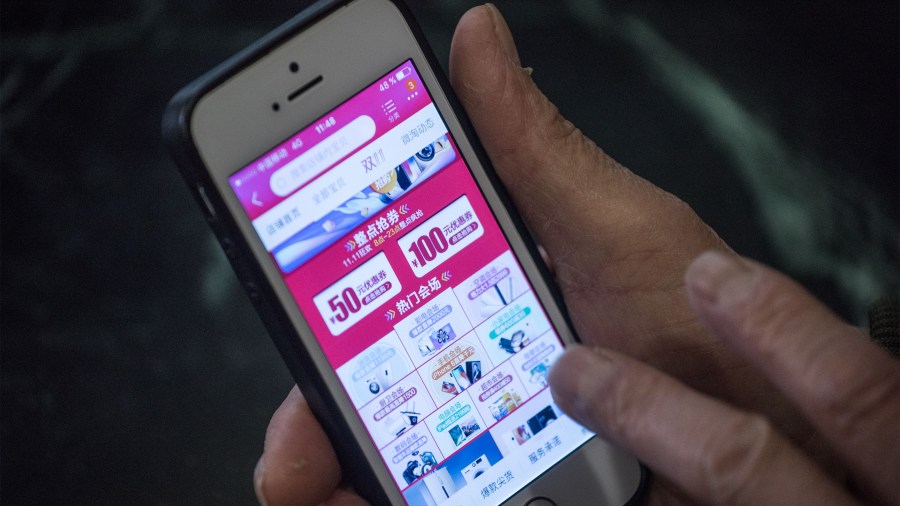China’s retail sales are growing fast on social media

At long last, Instagram influencers can stop using clunky workarounds to try to get you to buy things on the social media platform — things like, “click the link in the bio” or tagging the account attached to the brand they’re hawking.
As of this week, creators can tag a product, and their fans can buy it directly from the post, further cementing the influencer economy and so-called social e-commerce as the next big trend in online retail.
According to research cited in this Bloomberg piece, social shopping accounted for about 3% of all online sales in the United States in 2018, or just under $17 billion. But in China, it was 8.5% of online sales in 2017, and headed for more like 15% by 2022, or $413 billion in sales, per Frost & Sullivan.
And social shopping in China has already evolved past our charmingly quaint #ad hashtags and innovations like directly tagging products for easier purchasing. There, retail has combined with China’s other great social passion, livestreaming, and shop owners and influencers are hawking goods in real time.
Jennifer Pak, Marketplace’s China correspondent, has watched lots of livestreamed retail, from both shop owners and influencers. She said most of the productions are pretty low budget, as in a shop owner with a phone camera or even laptop camera showing off goods and taking requests from viewers, like “Hold up the blue one,” or “Do you have that in red?” She said often, you’ll hear a second person in the store reading comments aloud or even asking viewers to clarify what they want to see.
It’s low budget, yes, said Pak, but the videos still create an exciting atmosphere, almost like a live auction — or, well, QVC.
“What they’re trying to create … in some of these livestreams is a sense of urgency,” Pak said.
She said one influencer would encourage more people to show interest in a product by saying things like, “If I have three more people who are interested in this, we’re going to go and bargain with the shop seller for a lower price.”
The livestreams are interactive, too, so viewers can send thumbs up or hearts and maybe earn rewards and discounts at various shops.
And she said there’s interest from American designers who could use social media and online influencers to go directly to Chinese consumers without needing a physical presence in the country.
“Especially if they’re small- or medium-sized businesses who may not have the means and the funds to open a proper shop on these platforms,” she said, “they find this a very attractive way to sell their products, especially if it’s luxury products as well.”
Related Links: More Insight from Molly Wood
Bloomberg’s story on retailers luring Gen Z shoppers with social e-commerce noted that social shopping is expected to reach 15% of all online sales in China by 2022. Here in the United States, it’s more like 3% of online sales or just under $17 billion.
And while all the talk of influencer marketing here in the U.S. is still on Instagram and Snapchat, which recently rolled out big plans to expand its advertising business, the social video app TikTok is finally starting to get some attention from the mainstream (I already knew about it because, well, I have a 12-year-old).
TikTok, in case you don’t have a kid of your own, is the social video app that used to be Musical.ly and then was acquired by China’s ByteDance in 2017 and rebranded. It’s got over a billion downloads worldwide, and The Next Web’s digital update for April shows that Google searches for the app have been on a significant upward trend over the last year.
Now TikTok might be applying some pricing pressure to Facebook-owned Instagram, too. The Telegraph reports that big-name brands like Sony, Coca-Cola and FIFA are cutting bargain-priced influencer marketing deals with TikTok in order to reach its 500 million estimated users.
Side note: You guys know my theory about China’s parallel tech economy, right? How the country is basically growing the only real competition to the U.S. tech giants behind the Great Firewall, and how at some point, it’s going to burst out and be a global war for dominance the likes of which we’ve never seen? TikTok is the tip of the spear. Just saying.
The future of this podcast starts with you.
Every day, the “Marketplace Tech” team demystifies the digital economy with stories that explore more than just Big Tech. We’re committed to covering topics that matter to you and the world around us, diving deep into how technology intersects with climate change, inequity, and disinformation.
As part of a nonprofit newsroom, we’re counting on listeners like you to keep this public service paywall-free and available to all.
Support “Marketplace Tech” in any amount today and become a partner in our mission.


















